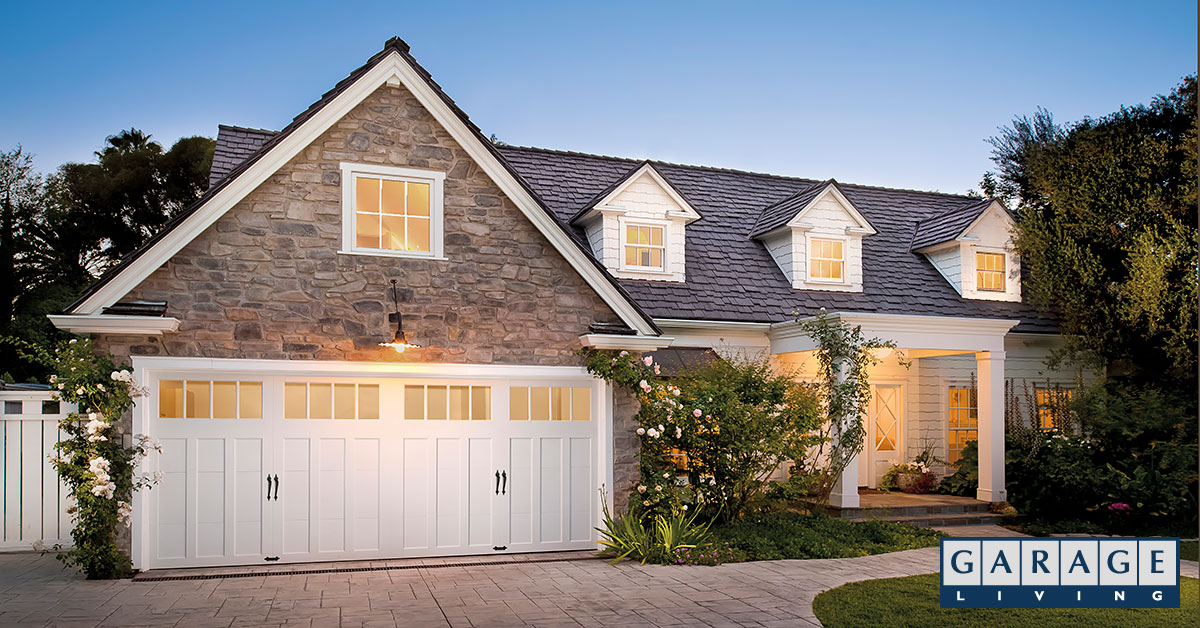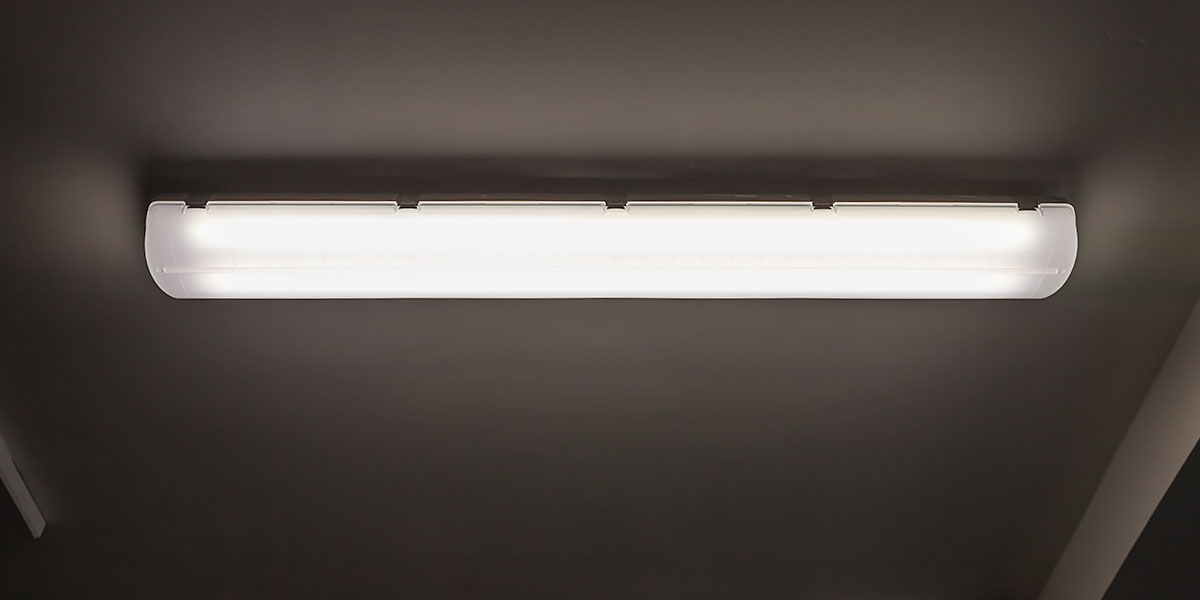When evaluating your home’s energy efficiency, you maybe be underestimating the important role garage energy efficiency plays in the carbon footprint you’re leaving.
Energy usage concerns in the non-garage areas of your home tend to get a little more attention. This includes making sure your appliances have an Energy Star certification, changing to more energy-efficient home lighting, upgrading to energy-efficient windows, and paying close attention to your thermostat setting.
These are just a few of the many ways homeowners can take steps to lower their monthly utility costs.
Look for garage energy efficiency upgrade opportunities
Your garage should really be considered an extension of your living space and have the same attention paid to it when evaluating how to lower your carbon footprint. A garage with poor energy efficiency has a direct impact on the rest of your house.
Cold air from the garage that penetrates your heated living space drives up your hydro bill during the winter. Hot air in the summertime coming into your home through the garage will increase both your air conditioner usage and hydro bill.
There are numerous opportunities available to improve your garage energy efficiency. Here are 13 tips that will specifically improve your garage energy efficiency and your home’s overall energy efficiency.
1. Insulate your garage walls and ceiling
One of the most impactful ways to improve garage energy efficiency is to add insulation to your garage’s walls and ceiling. There are several types available, depending on your garage’s specific needs (such as blow-in, batting, spray foam, and styrofoam board insulation).
Choosing the right type of insulation and having it properly installed will keep your garage at a more stable temperature by limiting the transfer of cold and warm air from the outside.
A more stable temperature in your garage environment has less of an impact on the temperature of the rest of the house, which will reduce your heating and air conditioning costs.
For homes with a living space above the garage, insulating your garage walls and ceiling becomes even more important.
2. Improve garage energy efficiency by insulating your garage door
An extension of insulating your garage’s walls and ceiling is to make sure your garage door is outfitted with energy-efficient insulation.
Improving your doorframe’s weatherstripping will also help improve garage energy efficiency. Some skilled homeowners may be able to handle garage door insulation or weatherstripping installation by themselves, or perhaps you’re due for a garage door upgrade that’s installed by professionals like Garage Living.
If you’re in the latter category, there are a number of custom options available to choose from, depending on the R-value you’re looking for. Typically, a new garage door comes with either polystyrene boards or polyurethane spray foam as insulation materials. Modern garage doors are also designed with better thermal breaks and seals than older garage doors, which enhances their insulating capabilities.
Garage door insulation not only improves your garage energy efficiency, it also:
- makes your garage door quieter when it’s operating
- reduces noise transfer from both inside and outside
- strengthens the garage door
3. Upgrade or fix your garage’s interior access door
Evaluate the access door between the garage and the house to help improve your garage energy efficiency. If the door is ancient, it’s almost certainly not providing the energy efficiency that a more modern replacement door can deliver.
If the door is relatively newer, try and assess just how tight a seal it’s currently providing. Replace or upgrade your door’s weatherstripping and the threshold barrier on the bottom of the door if necessary.
4. Insulate around light switches and outlets
Inspect your garage’s light switches and electrical outlets to see if there are any small openings or gaps around them. If so, close up those gaps with some type of insulation material or sealant to limit the transfer of cold and warm outside air.
It might seem inconsequential that these small openings can have an impact on your garage energy efficiency, but every preventative measure you can take will help, whether it’s to a larger or smaller degree.
5. Seal any additional openings in your garage
Also carefully check for gaps where your garage floor and wall meet. These gaps not only allow hot and cold air into your garage, they can also provide an access point into your garage from unwanted pests. Use a foam sealant or caulking to seal any such gaps.
6. Fix or upgrade your garage floor
A damaged garage floor can also impact garage energy efficiency. Even small cracks in the floor can allow cold air and gases into the garage and can be early warning signs of more serious structural issues. Road salt and water infiltration into those cracks (from melted snow and ice) can make the problem even worse. One option is to repair the cracks, but that might not always be the best solution.
A polyaspartic flooring surface like a durable Floortex™ coating provides your best solution for long-term protection against garage floor damage and potential cracks. It can also be applied as a type of baseboard around your garage’s interior perimeter, which eliminates any aforementioned gaps between your walls and floor.
And if you’re really taking into consideration all aspects of your green garage makeover, you’ll appreciate the fact that Floortex™ floor coatings are environmentally friendly because they’re free of VOCs (Volatile Organic Compounds). VOCs are chemicals found in products around the home that are slowly released into the air.
7. Improve your garage’s ventilation
Improving your garage’s ventilation can help when it comes to maintaining more stable temperatures inside your garage space. Roof vents are one low-cost ventilation method to consider. A fan-driven ventilation system on the garage’s ground level is another option.
Properly installed soffit venting around your garage’s upper exterior can also help with garage ventilation. Also remember that excess clutter restricts airflow in the garage, so consider implementing storage solutions like slatwall, specialty storage racks, or garage cabinets to keep your space tidy.
8. Upgrade your garage windows to boost garage energy efficiency
How energy-efficient are the windows in your garage? If your windows are older, it’s sensible to invest in new energy-efficient windows that may cost a little more, but will end up saving you money in the long run.
Another replacement option is to switch to storm windows. Replacing your windows’ weatherstripping and caulking will also ensure a tight seal and help with garage energy efficiency.
9. Update your garage lighting
Replace those outdated energy-sucking 60 watt incandescent bulbs currently lighting your garage with a more energy-efficient and modern alternative.
Our LED garage lighting illuminates your space much better and uses 30% less energy than a similar fluorescent light.
10. Get a new garage door opener
An old garage door opener is another area that can be negatively impacting your garage energy efficiency. Today’s garage door openers are more energy-efficient than the models of the past, with many openers using 75% less power in standby mode.
Modern garage door openers are also quieter and come with high-tech features that allow you to control your garage door from anywhere with your smartphone.
11. Rethink that old fridge running in your garage
Are you currently running an old fridge or freezer in your garage? If so, it’s likely costing you much more than you think to run it. Fridges are one of the most energy-consuming appliances in a home.
The older the fridge, the higher the cost to run it. A garage fridge manufactured before 1990 could potentially be costing you between $250-300 a year to operate.
This Energy Star calculator will give you an idea of what your old fridge is costing you to run. If running a garage or freezer in your garage is necessary, you’re much better off investing in a new energy-efficient appliance. You’ll dramatically lower your yearly operating costs to run the appliance and improve your garage energy efficiency.
12. Add aluminum capping to your garage doorframe
Aluminum capping involves covering your garage’s wooden doorframe with aluminum sheeting, which has a several benefits:
- a weather-resistant barrier is established between your garage’s exterior and interior, decreasing drafts and improving garage energy efficiency
- your garage exterior will have a much cleaner, finished look
- future maintenance on your wooden garage doorframe is virtually eliminated
13. Use garage solar panels
Is heating your garage during the winter and keeping it cool during the summer a necessity in your home? If so, the utility costs can add up. One option is to install solar panels on your garage roof. Converting the sun’s energy to heat, cool, and provide electricity to your garage and the rest of your home will lower your hydro bill.
Admittedly, the solar panel option isn’t without its downsides. It can require a significant upfront investment, depending on the size of your setup. Another negative is that this still-developing technology is only going to improve in the coming years. Like any type of emerging technology, waiting might be prudent.
Reduce your carbon footprint with garage energy efficiency upgrades
You can reduce your carbon footprint and lower your monthly utility costs by using some of these garage energy efficiency tips.
Garage Living can help you achieve your green garage goals. We specialize in a number of the garage energy efficiency improvement solutions listed here. Simply book a free design consultation to get started.

